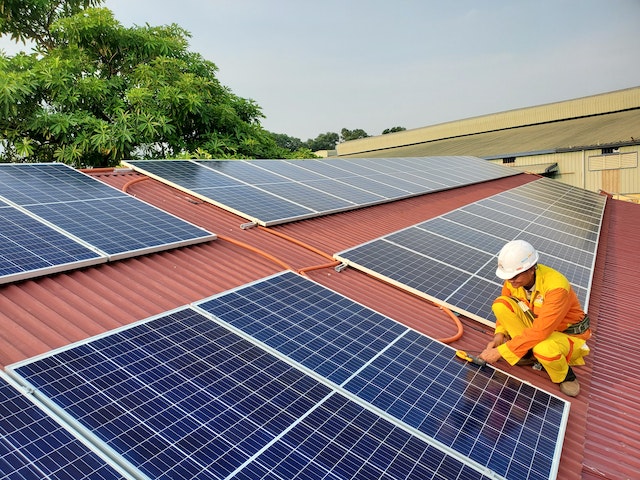How are solar panels made? As many more homes and businesses across Maui embrace green energy, one of the key questions people are asking is how are solar panels made? Monocrystalline or polycrystalline silicon solar cells are combined and soldered to form solar panels, which are then covered with anti-reflective glass. The photovoltaic effect begins when light reaches the solar cells, producing electricity. Read more about how Maui PV technology works.
How are solar panels made?
Read on to learn about how solar panels are made:
Designing the solar cells
Solar cells are a solar panel’s main constituents. The silicon ingot used to make p-type or n-type solar cells is a mixture of crystalline silicon and either gallium or boron. Phosphorus increases the cells’ ability to conduct electricity. After being divided into thin sheets, the silicon ingot is next covered in an anti-reflective coating. The cells are then punctured with tiny openings to direct the electricity.

Solder solar cells together to create a panel
Metal connectors are soldered together to connect each solar cell after the phosphorous has given the silicon wafers their electrical charge. Depending on how large the solar panel is manufactured to be determines how many cells are soldered together at once. To give you an idea, 60 cell panels are the typical size, and 72 cell panels are typically utilized for commercial projects. This is key to understanding how are solar panels made.
Install a backsheet, front glass layer, and frame
The solar cells have a backsheet fitted on the bottom for protection. This is often made of an incredibly tough plastic. The solar cells are then covered with a thin layer of glass to allow sunlight to reach the solar cells. Ethylene vinyl acetate adhesive is used to hold these pieces together (EVA). A metal frame that fastens to mounting clamps on your roof contains all of these parts. Here’s why you need Maui solar PV energy.
How are solar panels made: Install the junction box
The junction box safeguards the wiring of a solar panel. So that energy continues to flow from the panel to its inverter and doesn’t reverse direction. When a solar panel isn’t producing electricity, it will attempt to use energy instead, hence this capability is crucial. The junction box prevents any electric flow reversal, allowing your solar panels to operate as intended.
How are solar panels made: Quality testing
Every solar panel that is released into the market is put through Standard Test Conditions (STC) testing to make sure it will deliver the outputs, efficiencies, and other specifications that the manufacturer claims in the technical specification sheet. Panels are placed in a flash tester under “normal” settings, which include 1000W/m2 of radiation, a 25°C cell temperature, and 1.5g of air mass. The solar panel is prepared for installation and shipping if it passes.
How solar panels work
Silicon cells are the most crucial component of solar photovoltaics, which are made up of several other components. The nonmetal silicon, with the atomic number 14 on the periodic table, has conductive qualities that allow it to turn sunlight into electricity. A silicon cell responds to light by setting electrons in motion, which starts an electrical current. The term “photovoltaic effect” refers to this.
However, silicon cells by themselves are unable to power your house. The electrons from the solar cell can escape through them and provide usable power when they are combined with a metal shell and wiring. Single cell (monocrystalline), polycrystalline, and amorphous types of silicon are available, with the latter two being most frequently linked to thin film solar panels.


